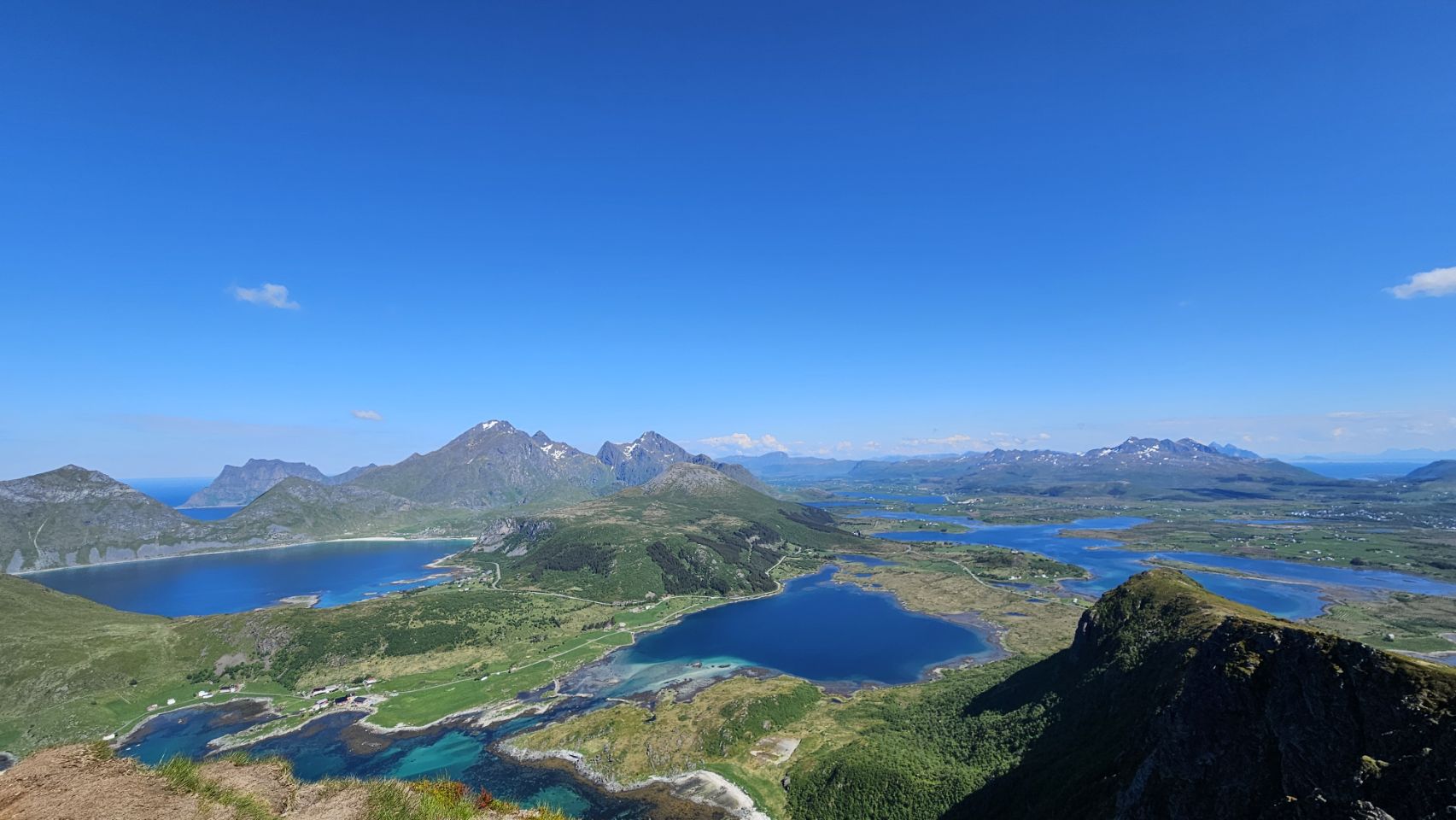If you’re an adventurous soul seeking new experiences away from the usual tourist hotspots, 2024 offers a world of unexplored gems waiting to be discovered. These off-the-beaten-path destinations are perfect for eco-conscious travelers who value authentic encounters and want to reduce their environmental impact. Whether you’re looking to hike through uncharted wilderness, immerse yourself in local cultures, or simply find peace in nature, these destinations will inspire your next great adventure.
Why Choose Off-the-Beaten-Path Destinations?
Traveling off the beaten path not only offers unique experiences but also helps reduce the pressure on over-touristed areas. By visiting lesser-known locations, you can:
If you’re an adventurous soul seeking new experiences away from the usual tourist hotspots, 2024 offers a world of unexplored gems waiting to be discovered. These off-the-beaten-path destinations are perfect for eco-conscious travelers who value authentic encounters and want to reduce their environmental impact. Whether you’re looking to hike through uncharted wilderness, immerse yourself in local cultures, or simply find peace in nature, these destinations will inspire your next great adventure.
- Support Local Communities: Your tourism dollars go directly to small businesses and local residents.
- Minimize Environmental Impact: Less crowded places often have more sustainable practices and are better equipped to handle tourism without significant ecological damage.
- Experience Authentic Culture: You’re more likely to have genuine interactions with locals and experience traditions that haven’t been commercialized.
1. The Azores, Portugal: Europe’s Hidden Gem
Why It’s Off the Beaten Path
Located in the middle of the Atlantic Ocean, the Azores archipelago is often overlooked by travelers heading to mainland Europe. However, this remote destination offers some of the most breathtaking landscapes in the world.
What to Do
- Hiking and Nature Trails: Explore the verdant landscapes of São Miguel Island, with its stunning volcanic craters, hot springs, and lush greenery. The Sete Cidades hike is particularly popular, offering panoramic views of the twin blue and green lakes.
- Whale Watching: The Azores is one of the best places in the world to observe marine life, including sperm whales, dolphins, and sea turtles.
- Eco-Friendly Stay: Choose from a variety of sustainable accommodations that emphasize environmental responsibility, such as eco-lodges and agritourism farms.
Best Time to Visit
Visit in late spring or early autumn to avoid the peak tourist season and enjoy mild weather.
2. Svaneti, Georgia: A Journey into the Caucasus Mountains
Why It’s Off the Beaten Path
Svaneti, a region in the northwestern part of Georgia, remains largely undiscovered by international travelers. Nestled in the Caucasus Mountains, this remote area is known for its medieval stone towers, rugged terrain, and rich cultural heritage.
What to Do
- Hiking in the Caucasus: Trek through the scenic mountain trails connecting ancient villages like Mestia and Ushguli, which is one of the highest inhabited villages in Europe.
- Cultural Immersion: Visit local families who maintain traditional ways of life, including ancient music, dance, and cuisine.
- Sustainable Tourism: Stay in locally-owned guesthouses that practice sustainable tourism by offering organic food and reducing waste.
Best Time to Visit
The best time to visit Svaneti is during the summer months when the weather is warm, and the mountain passes are accessible.
3. Socotra, Yemen: An Island of Unique Biodiversity
Why It’s Off the Beaten Path
Socotra, an isolated island in the Arabian Sea, is often referred to as the “Galápagos of the Indian Ocean” due to its incredible biodiversity. Its remote location and limited infrastructure keep it off the radar of most tourists.
What to Do
-
Explore Alien Landscapes: Discover the island’s otherworldly scenery, including the iconic Dragon’s Blood trees and bottle trees that look like they belong on another planet.
-
Marine Adventures: Snorkel in crystal-clear waters, explore pristine coral reefs, and enjoy secluded beaches.
-
Sustainable Interaction: Engage with local communities who have maintained a sustainable way of living in harmony with nature for centuries.
Best Time to Visit
Visit Socotra between October and April when the weather is cooler and more comfortable for outdoor activities.
4. Lofoten Islands, Norway: Arctic Beauty Beyond the Ordinary
Why It’s Off the Beaten Path
The Lofoten Islands, located above the Arctic Circle, offer dramatic scenery and unique cultural experiences. The islands remain less crowded compared to other popular European destinations, especially during the off-peak seasons.
What to Do
- Witness the Northern Lights: Visit during winter to experience the mesmerizing Aurora Borealis.
- Arctic Adventures: Go kayaking through the fjords, hike to the peaks of rugged mountains, or try your hand at deep-sea fishing.
- Eco-Friendly Stays: Many accommodations in Lofoten are committed to sustainability, offering eco-friendly lodging options like traditional fishermen’s cabins (rorbu) with modern green amenities.
Best Time to Visit
For the Northern Lights, visit between late September and early April. For hiking and outdoor activities, summer months are ideal.
5. The Faroe Islands: Nordic Splendor Untouched by Time
Why It’s Off the Beaten Path
The Faroe Islands, an autonomous territory within the Kingdom of Denmark, are often overshadowed by neighboring Iceland. However, their untouched landscapes and serene environment make them a must-visit for those seeking solitude in nature.
What to Do
- Hiking and Nature Walks: Trek through the islands’ dramatic cliffs, rolling green hills, and stunning fjords. The hike to the viewpoint of Trælanípan, where the lake appears to float above the ocean, is particularly breathtaking.
- Bird Watching: The Faroe Islands are home to numerous bird species, including puffins, which can be observed in their natural habitat.
- Sustainable Travel: The Faroese are deeply committed to preserving their natural environment. Engage in low-impact tourism by staying in eco-friendly guesthouses and minimizing waste.
Best Time to Visit
The summer months (June to August) offer the best weather for hiking and outdoor activities.
6. Raja Ampat, Indonesia: A Diver’s Paradise
Why It’s Off the Beaten Path
Raja Ampat, an archipelago off the coast of West Papua, is one of the most remote and least developed regions of Indonesia. Known for its rich marine biodiversity, it’s a dream destination for divers and underwater photographers.
What to Do
- Diving and Snorkeling: Explore some of the world’s most vibrant coral reefs, teeming with colorful fish, manta rays, and other marine life.
- Island Hopping: Visit the numerous small islands, each with its own unique landscapes and ecosystems.
- Eco-Conscious Travel: Many of the lodges and resorts in Raja Ampat are committed to sustainability, using solar power, recycling programs, and locally sourced materials.
Best Time to Visit
Raja Ampat can be visited year-round, but the best diving conditions are typically between October and April.
7. The Alentejo, Portugal: Portugal’s Best-Kept Secret
Why It’s Off the Beaten Path
While Lisbon and the Algarve attract the majority of tourists to Portugal, the Alentejo region remains a peaceful retreat, known for its rolling plains, charming villages, and rich cultural heritage.
What to Do
- Explore Historic Towns: Wander through the whitewashed streets of Évora, a UNESCO World Heritage site, and the picturesque village of Monsaraz.
- Wine Tasting: The Alentejo is one of Portugal’s premier wine regions, offering tours of vineyards and tastings of award-winning wines.
- Sustainable Stays: Many rural accommodations in Alentejo are committed to sustainability, offering eco-friendly lodging in restored farmhouses.
Best Time to Visit
Spring (April to June) and autumn (September to November) are the best times to visit, offering pleasant weather and fewer tourists.
8. Huaraz, Peru: The Gateway to the Andes
Why It’s Off the Beaten Path
Huaraz, a highland city in Peru, serves as the gateway to the Cordillera Blanca, the world’s highest tropical mountain range. While Machu Picchu and Cusco receive the majority of tourists, Huaraz offers an alternative for those looking to explore the Peruvian Andes.
What to Do
- Trekking: The Santa Cruz trek and the Laguna 69 hike offer some of the most stunning mountain scenery in South America.
- Cultural Experience: Visit local markets and ancient ruins, and learn about the traditions of the indigenous Quechua people.
- Eco-Tourism: Many tour operators in Huaraz focus on sustainable trekking, minimizing environmental impact and supporting local communities.
Best Time to Visit
The dry season (May to September) offers the best weather for trekking and outdoor activities.
9. Luang Prabang, Laos: A Blend of History and Nature
Why It’s Off the Beaten Path
While Southeast Asia is known for its bustling cities and beaches, Luang Prabang offers a more tranquil experience, blending natural beauty with rich cultural history. This UNESCO World Heritage city is less crowded than its neighboring capitals, making it ideal for a peaceful retreat.
What to Do
- Temple Visits: Explore the city’s numerous temples, including the famous Wat Xieng Thong, known for its intricate carvings and stunning architecture.
- Kuang Si Waterfalls: A short drive from the city, these multi-tiered waterfalls are a must-see, offering crystal-clear pools for swimming.
- Eco-Friendly Accommodations: Many of the guesthouses and hotels in Luang Prabang prioritize sustainability, using renewable energy sources and supporting local crafts(Continuing from previous section)
- Cultural Immersion: Take part in the morning alms-giving ceremony, where monks collect offerings, and visit local villages to experience traditional Laotian life.
- Sustainable Choices: Choose eco-friendly accommodations that support local crafts and use renewable energy sources.
Best Time to Visit
November to February offers cooler, drier weather, making it the ideal time for exploration.
10. Madagascar: An Island of Unique Wildlife and Ecosystems
Why It’s Off the Beaten Path
Madagascar, the fourth largest island in the world, is renowned for its biodiversity. Over 90% of its wildlife is found nowhere else on Earth, making it a paradise for nature lovers. Despite its uniqueness, it remains relatively undiscovered by mass tourism.
What to Do
- Wildlife Watching: Visit national parks like Andasibe-Mantadia and Ranomafana to spot lemurs, chameleons, and other endemic species.
- Explore Baobab Avenue: Wander through the iconic Baobab trees, which create a surreal landscape unlike any other.
- Marine Exploration: The waters surrounding Madagascar are home to vibrant coral reefs and diverse marine life, perfect for snorkeling and diving.
- Eco-Tourism Initiatives: Support conservation efforts by staying at eco-lodges that protect Madagascar’s unique ecosystems.
Best Time to Visit
April to October is the dry season, providing the best conditions for wildlife watching and outdoor activities.
Conclusion
Choosing to explore off-the-beaten-path destinations in 2024 not only offers you the chance to experience some of the world’s most incredible landscapes and cultures but also contributes to more sustainable and responsible tourism practices. Whether you’re trekking through the remote mountains of Svaneti, diving in the rich waters of Raja Ampat, or marveling at the unique biodiversity of Madagascar, these destinations promise unforgettable experiences that go beyond the ordinary.
By venturing to these lesser-known spots, you’ll not only create memories to last a lifetime but also help preserve these fragile environments and support local communities. So pack your bags, grab your eco-friendly travel gear, and get ready to explore the road less traveled in 2025!
















